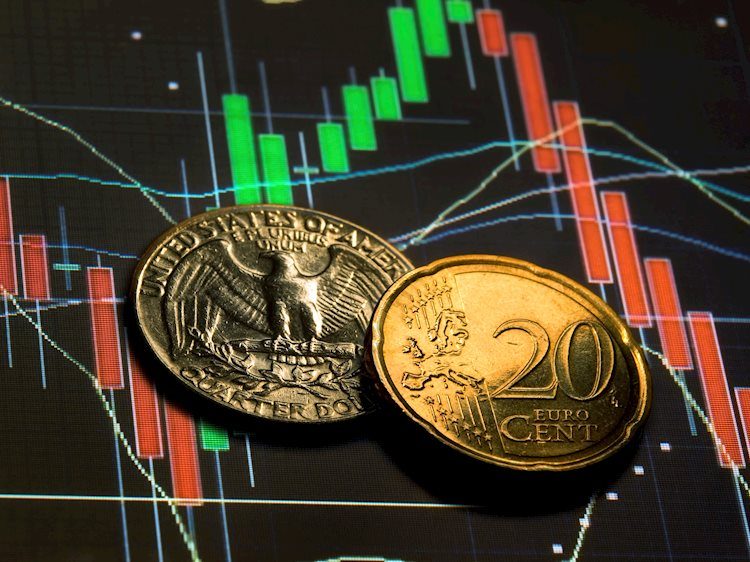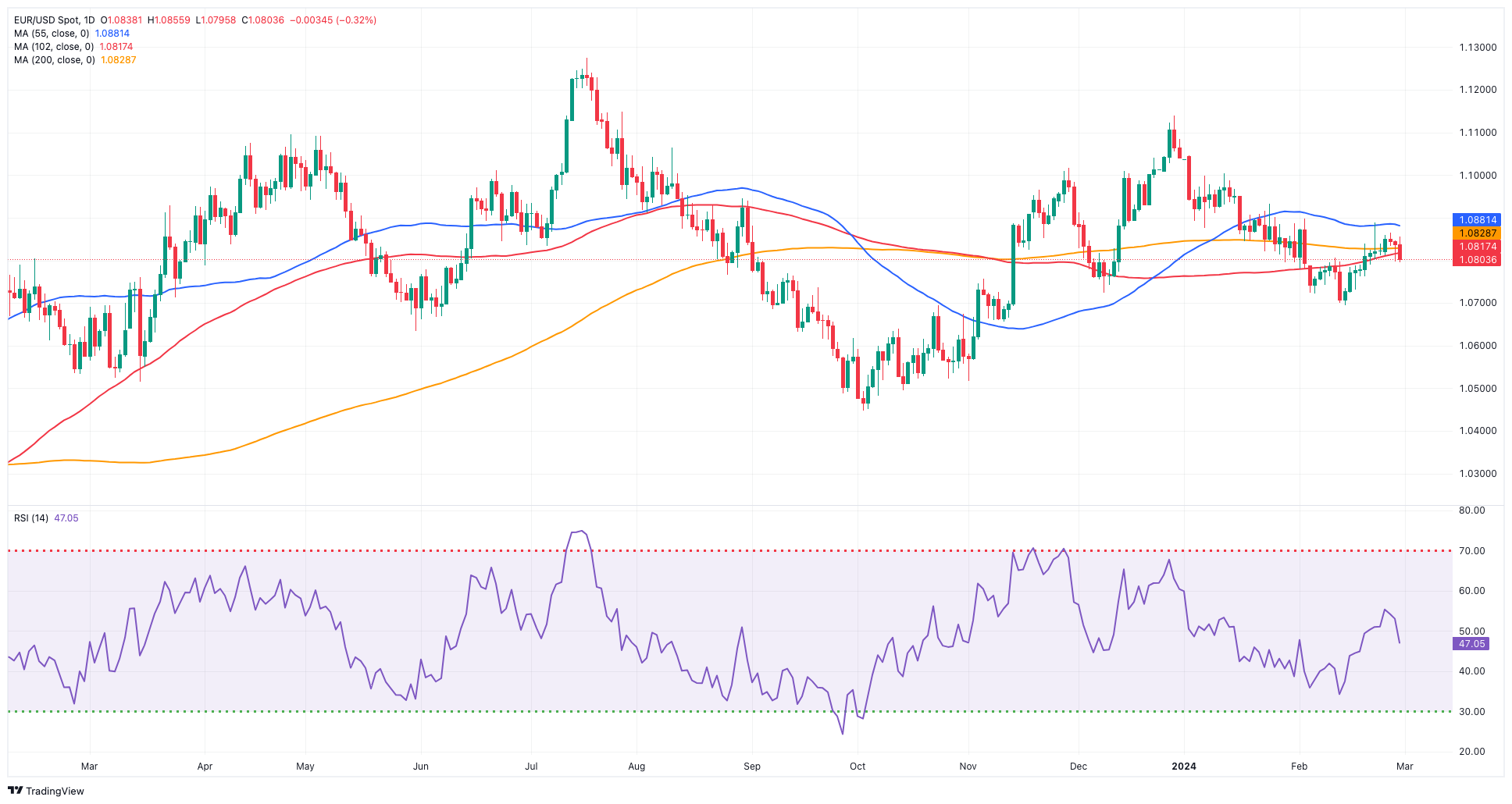
- EUR/USD added to the weekly retracement and pierced 1.0800.
- Germany’s flash CPI rose less than estimated in February.
- Investors’ attention now shifts to EMU’s CPI on March 1.
EUR/USD extended its weekly retracement for the third session in a row, challenging once again the 1.0800 level on Thursday in response to the strong pick-up in the buying interest around the US Dollar (USD).
Extra losses in spot came along with the continuation of the upward bias in the Greenback, which motivated the USD Index (DXY) to reclaim the area beyond the 104.00 zone once again despite another negative performance of US yields across different timeframes.
While the US Dollar faced some fresh selling pressure after US PCE showed persistent disinflationary pressure in January, it seems to have regained balance following comments from Atlanta Fed President Raphael Bostic, who argued that recent inflation data indicates a challenging journey ahead to reach the 2% target. Bostic also emphasized the need for vigilance and attentiveness, adding that, despite fluctuations, inflation is gradually decreasing over the long term. Furthermore, he suggested that it might be suitable to lower the policy rate during the summer, mentioning that economic indicators will determine the timing of rate cuts.
In the meantime, Thursday’s price action in the pair came in tandem with the generalized downtrend in US and German yields, always amidst ongoing speculation surrounding a potential interest rate cut by the Federal Reserve (Fed), which could occur as soon as June or at a later time.
On the latter, expectations for a rate cut in June remained around 52%, as per CME Group’s FedWatch Tool.
Similarly, the European Central Bank (ECB) shares the view that the start of the easing cycle may be at some point during the summer. Supporting this view, Board member Peter Kazimir announced on Wednesday his preference for the start of the bank’s easing cycle in June.
However, another sign that inflation in Germany continued to lose traction came after advanced CPI readings showed consumer prices rising 2.5% in the year to February (vs. 2.6% expected and 2.9% previous). Still around inflation, flash CPI readings for the whole euro bloc are due at the end of the week and are expected to add to the ongoing debate surrounding the timing of the ECB rate cut.
EUR/USD daily chart
EUR/USD short-term technical outlook
The intermediate 55-day SMA looks to be supporting the weekly high at 1.0888 (February 22). The breakout of this zone may prompt EUR/USD to hit additional weekly tops at 1.0932 (January 24) and 1.0998 (January 11), all prior to the psychological barrier of 1.1000 and coming ahead of the December 2023 peak of 1.1139. (December 28).
On the downside, if the pair clears the 2024 low of 1.0694 (February 14), it may then look for the November 2023 low of 1.0516 (November 1). The loss of the latter might lead to a move to the weekly low of 1.0495 (October 13, 2023), which is below the 2023 low of 1.0448 (October 3) and the round level of 1.0400.
As long as the EUR/USD remains below the 200-day Simple Moving Average (SMA) of 1.0828, the pair’s outlook should be negative.
Looking at the 4-hour chart, the slow increase appears to be holding steady so far. The next upward barrier is 1.0888, which before 1.0897 and 1.0932. In contrast, early support appears at 1.0796, followed by 1.0761, 10732, and 1.0694. The Moving Average Convergence Divergence (MACD) remained positive, while the Relative Strength Index (RSI) dropped to around 43.

